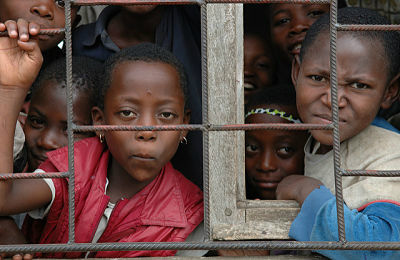News from Africa: The DRC Poverty Rate Continues to Stagnate
 The Democratic Republic of the Congo is one of the largest countries in Central Africa and is a land rich with natural resources and raw materials, inevitably leading to an economic boom for its mining industry.
The Democratic Republic of the Congo is one of the largest countries in Central Africa and is a land rich with natural resources and raw materials, inevitably leading to an economic boom for its mining industry.
Despite a population of 77 million people, 80 million acres of land suitable for farming and an abundance of over 1,100 different rare metals and minerals, the DRC poverty rate remains among the highest in the world. While many consider it to be the poorest, the most recent United Nations Human Development Index of 2015 ranked the country at 176 out of 187 countries.
Between 1970 and 2012, the average annual growth rate of the DRC’s GDP per capita remained at -2.1 percent. From 1990-2012, annual inflation rates increased by 191 percent. As of 2011, an estimated 87.7 percent of the population, about 67.5 million people, remained under the international poverty line, which is currently $1.25 per day.
Currently, the average income for a Congolese citizen is about $400 per year. One example of the negative results of the DRC poverty rate is an extremely high infant mortality rate, with one in seven newborns dying before the age of 5.
Among other things, the poverty rate has caused a high usage of child labor, with about 25 percent of children ages 5-14 employed, an increasing prevalence of HIV/AIDS and a notable decline in school enrollment.
Additionally, the country has a 45 percent vaccination rate for some of the most commonly known diseases, a lack of access to clean drinking water and severe malnutrition nationwide.
Reasons for DRC Poverty
The reasons for the DRC poverty rate stem from a number of factors, however, can be summarized as the result of political instability and corruption, particularly in the mining industry.
In addition to this, there are large swaths of land in the country that are controlled by militia groups, the land where many mines are located, allowing for them to be the financial beneficiaries to some foreign investors.
This problem originates from government corruption and an intended overall lack of transparency in the mining contracts from all parties involved, specifically in regards to where the money will be directed. All of these factors have resulted in the DRC government losing more than $5 billion in revenue that could have been allotted to fund infrastructure, public health, education or foreign commerce.
Fortunately, two prominent activists have emerged to speak out against these injustices. American television star Robin Wright in “House of Cards,” in coordination with JD Stier, president of the social activist organization Stier Forward, has created the “Stand With Congo” campaign.
Stand With Congo
Founded in the spring of 2016, the campaign’s main focus geared toward influencing the Congolese mining industry to achieve full transparency, under the idea that doing so could inherently solve other problems for the country.
Another focus of the campaign is to demand that the current DRC President, Joseph Kabila, who is often associated with corruption, vacate office immediately. Kabila has been in power since 2006, and ignored the provisions of the DRC constitution, exceeding the two-term limit.
In 2016 alone, the Stand With Congo campaign hosted 88 events in 17 countries and has also joined the Congolese Youth Movement who is advocating for reelections and Kabila to be removed from office.
– Hunter McFerrin
Photo: Flickr
